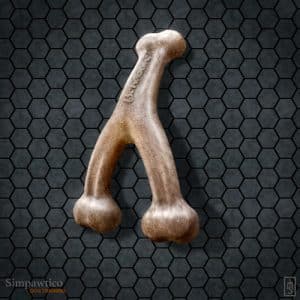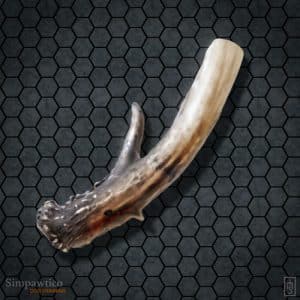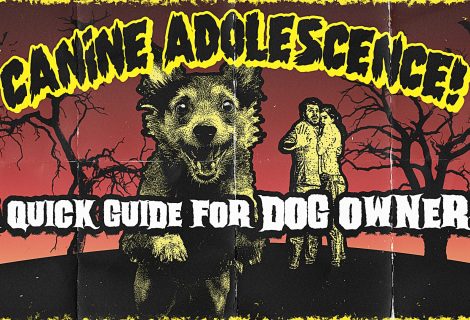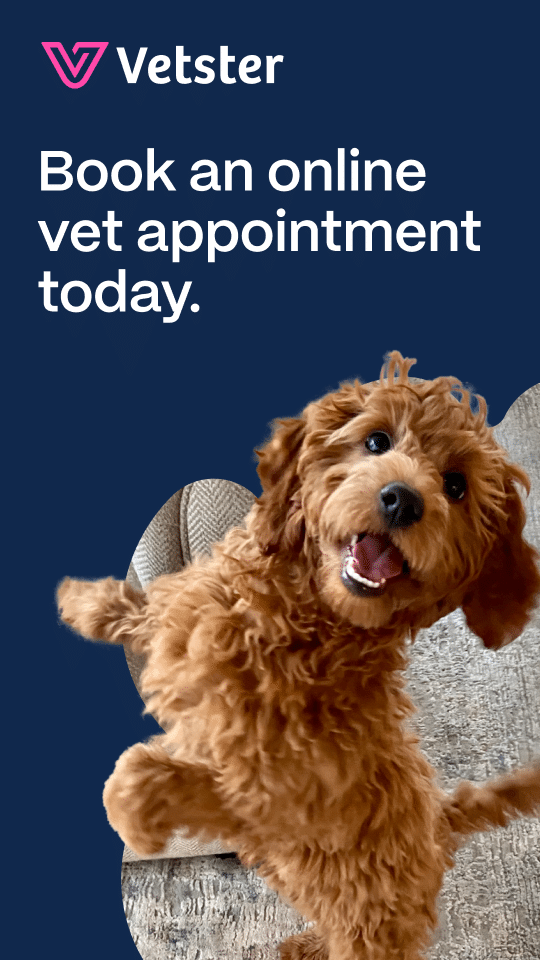Chew Toy Training—5 Tips to Chew Toy Train your Dog (w/Olive!)
In our last post, which detailed Olive’s first week home, we talked about focusing on the management aspect first before getting too caught up in teaching behaviors and doing fun stuff. Now that she’s settled in a bit and starting to find her groove, we can get into some of the nuts and bolts. Week Two’s goals were:
- Chew toy training
- Name training
- Offered attention (free-engagement)
- Control behaviors
- Positions: sit • down • stand
- Mouth: take it • leave it • drop it
- Walking with Darwin
You’ll notice that at the top of the list was “chew toy training.”
As I’ve said many times, one of the greatest things you can do for house manners and being home alone is to chew toy train your dog. A dog that’s hooked on chew toys will stay out of most kinds of trouble. I’ve also said before that it’s not what it is; it’s what you’ve trained it to be. So if your dog isn’t into chew toys, that’s not the end of the conversation. We need to train them to be into chew toys.
BAD HABITS
From the very first night, Olive had a habit of suckling and chewing on the blankets. This was totally unacceptable. Luckily, we’d put down some older ones because we weren’t sure what to expect, and we didn’t want her messing up the nice comforter. That was actually my wife’s idea, and boy, that was smart planning.
This kind of suckling/gnawing behavior is sometimes a comforting activity that understimulated dogs will engage in, kind of like a pacifier. I could also tell that Olive had been allowed to play with squeak toys and plush toys in her old life since she went bonkers for them. Some squeaky and plush toys came with her when we adopted her; eventually, she would start destroying these.
This was exactly what I was afraid would happen, and this is exactly why in the four types of toys video I mentioned that I don’t like to let dogs have squeaky and soft toys because it encourages them to do the same with other things in the house…like the blankets, pillow corners, and even the underwear she keeps trying to steal from the hamper. Now, the act of chewing is calming, and it gives a dog healthy outlets. It alleviates boredom, calms them down, and gives them something to funnel energy into. Think of it like giving a kid a coloring book.
So, I don’t want to discourage chewing, I just need to channel her desires into better objects. We needed to make the transition from soft things to real chew toys. I wanted her hooked on hard things like Nylabones, Benebones, antlers, and similar types of toys.
My late Boston terrier Bobo was trained to channel his jazzed-up energy into a chew toy. When he got overwhelmed and kind of hyper, he was trained to find a bone and tear into it for five minutes or so. After that, he was cool as a cucumber.
I would like for Olive to pick up this habit as well. Also, both of my other dogs are addicted to chew toys, and it’s a tremendous management tool. We even take bones with us when we travel and it helps keep them busy at grandma’s house, or when they’re hanging out at the Simpawtico facility. So to that end, here are my five strategies that we used for Olive’s chew toy training: 1) Gateway Toys 2) Baited+Roughed Up Chew Toys 3) 2-Step Redirecting 4) Targeting+Shaping 5) Praise, Praise, and more Praise Let’s take a closer look at these…
GATEWAY TOYS
Strategy number one is to use gateway toys. These are temporary in-betweeners meant to pave the way toward real chew toys. For this purpose, we purchased a couple of new toys for Olive. One was this Kong ring. It squeaked, and while I typically discourage dogs from getting squeak toys as I said, I knew that Olive had an affinity for squeakers. So something tougher and more durable would make a good bridge to other things. This worked great because she could chew on it, and squeak it, but it was harder for her to destroy. Squeaking it got her to engage with it almost immediately. As of the making of this video, we’ve already phased this toy out, and she’s engaging 100% now with non-squeaking toys.
I also got a Kong dental toy. We jammed some peanut butter in the ridges to make it interesting. This one has deep cracks, so I wanted her to really engage with this piece and get busy with it. This worked great, too, because it was even tougher than the ring, so she could really get crazy with it.
Now, I should mention that my Kong video is aimed at creating a chew toy habit. The goal of a food-filled Kong is not only to crate train or occupy alone time; it’s also to get the dog into chewing on something in the first place. This is, in essence, being used as a gateway toy, too, eventually leading to the main chew toys.
The takeaway here for you is not necessarily to go out and buy these two toys but to think of things along these lines that are a good fit for your dog to bridge the gap. Look for toys that your dog will find interesting but are a little tough. Even if they won’t last too long, that’s ok because they’re not a long-term solution. They’re short-term items that get them hooked into spending time with a toy in the first place. Every dog will be a little different, and the gateway toys should be phased out at some point. Using these gateway toys led us right into strategy number two, using a
BAITED + ROUGHED UP CHEW TOY
In short order, we took one of the Nylabones that my other dogs had already worked on. This had lots of nooks and crannies on it, and it’s a lot more inviting than a brand-new one. There’s lots of grippy space on it. Then we smeared some peanut butter lightly in the cracks. It’s not necessary to glob it on. I want to make it a little tempting. Just like on the dental toy, she has to work at those nooks and crannies to get the peanut butter, meaning she has to chew on the bone. While she’s doing it, we praise her enthusiastically.
This is essentially classical conditioning. She chews, and we praise her for the duration. She comes to see chewing as an indicator of praise. Plus, she’ll discover that chewing is awfully great all by itself without external praise. If you don’t have an “already-been-chewed” bone to try this with, get a new one and rough it up. Use some coarse sandpaper, a file or a rasp, or even a cheese grater if nothing else. All the good smelly stuff is just under that smooth, factory surface, so get that sucker nice and used-looking. Now, we also had to deal with that blankie-suckling situation. So, we use…
TWO-STEP REDIRECTING
Often the process of chew toy training is necessitated by your dog chewing on, shall we say, unapproved things like shoes, purses, underwear, and the mail. Many training tips online mention redirecting or swapping your dog’s activity from non-sanctioned items to chew toys. When making this transition though, it’s important to get the order of operations down right.
One: stop the inappropriate chewing
Suggesting a chew toy as an alternative is great, but don’t just jam it in their face. Owners make this common mistake when trying to redirect their dog to better behavior, and they’re missing a step in between. First, calmly get the dog to STOP chewing on whatever it is, and praise that. Praising the cessation, or the STOPPING of the behavior, creates a whole operantly conditioned sequence in their brain unto itself.
Two: suggest an alternate
THEN, offer the alternative toy to fill the vacuum, and praise THAT when they engage with it. It’s a two-step process. Get them to stop chewing on the bad thing and praise stopping; then offer the other toy, and praise any willing engagement. Anything can be turned into a teachable moment. And when you think about what you want your dog to do instead, you start seeing that as a trainable behavior.
In Olive’s case, we calmly, serenely, without ever losing our cool, persistently stopped her from chewing the blanket. We’d hold onto it with our hands, and when she let go, we praised her. We didn’t want it to turn confrontational because she’d just shut down. The whole process needed to be supportive but resolute. Fortunately, it took less than a week for her to start being more curious about the chew toys. Eventually, she started settling down with the blanket, and we stopped her like usual, so she grabbed a chew toy on her own. We praised her lavishly for this, which seemed to seal the deal.
Now she’s engaging willingly with the bones and actively seeking them out and parading them in front of his to show how good she is. Some of you won’t be able to sell it to your dog with any of these strategies. No worries, though; we always have more tricks up our sleeves.
TARGETING + SHAPING
You can always take a more structured route with targeting and shaping. You have to build interest and then reinforce the engagement with the item. This is how trainers teach a dog to pick up specific items or to acclimate them to Gentle Leaders or muzzles. It’s willing engagement that is encouraged and cultivated, not forced. As with any training activity, you can always break it down into as many necessary parts to succeed.
For example, if your dog isn’t taking the bait and working at the peanut butter, reward and praise them for simply investigating it. Reward them for bopping it with their nose, then reward them for putting their mouth on it, and so on until they’re taking it. This is called targeting, and we shape it over time to be closer and closer to what we want it to look like.
There’s a video using targeting by Donna Hill on how to teach a service dog a directed retrieve.
While that video doesn’t deal directly with chew toys, it uses a similar process of targeting and shaping that you could apply to get your dog interested in a chew toy or even into a game of tug like we talked about in the Drop It video. I have done exactly that many times with my students’ dogs. Finally, the easiest strategy to implement is just…
PRAISE, PRAISE, AND MORE PRAISE!
Here’s the step that most people miss, and it’s a golden opportunity they waste: so simple: praise your dog enthusiastically the whole time they’re engaging with the toy. So often, we give the dog a toy, and they start working on it, and we go, “Oh, thank god, I can go check my email now.” So not only does the dog stop getting social interaction, but unless they happen to get hooked into the act of chewing itself right away, there won’t be as much buy-in. So hand them a toy, engineer the situation to get maximum engagement, and then praise the hell out of it. This is a teachable moment. Remember, you will eventually be able to use the chew toy to occupy your dog while you do other things.
For right now, you must tend to it and cultivate the habit. You sit with them and you act like their cheerleader. In fact, any time your dog engages with a chew toy, take just a moment to praise them. Walk over, give them some loving petting, and tell them how proud of them you are. You’ll be conditioning them to associate the chew toy with praise. AND chewing is a calming, enjoyable activity. It would be like if someone coupled your favorite activity with compliments and a massage. Who wouldn’t love that?!
Let’s recap the process:
- Use gateway toys to get the process moving
- Use a baited, roughed-up chew toy for initial engagement
- Make sure redirecting from non-approved items has a middle step where they are praised for stopping, then offered the chew toy as an alternative, and then praised AGAIN for engaging with it
- If none of these seem to seal the deal, try Targeting + Shaping; break it down into smaller phases and nail each phase down systematically with positive reinforcement
- And finally, Praise, praise, and more praise; praise all engagement heavily to build maximum buy-in
Also, remember that you can always combine several approaches to get the job done. It’s not a search for a magic bullet. It’s about engineering your space so that the options you want your dog to choose are abundant and easy. For example, Two-Step Redirecting might segue into a short session of Targeting and Shaping to get the initial buy-in. Or you may offer a better Gateway Toy, or a Baited and Roughed Up Chew Toy.
No matter what, keep at it, and give the habit time to form. In the end, good habits are just as hard to break as bad ones. Now, here’s my question for you. I gave you five, strategies for chew toy training, do you have any cool approaches I didn’t list? Do you have neat stories about how you might have gotten your dog hooked? Share them with us in those comments.
In the meantime, good luck with your chew toy training. As always, keep learning, keep practicing, and we’ll see you next time!
RESOURCES
USE THE FOLLOWING TWO VIDEOS TO HELP YOU SEE HOW TARGETING and SHAPING WORK
GATEWAY TOYS WE USED
CHEW TOYS WE LOVE
You might want to take a look at our rundown of monthly chew toy boxes.
The links below are affiliate links. These won’t cost you anything, but the commissions we may earn through them help offset the cost of dog treats. Thanks for your support!
We really love Bullymake’s monthly boxes
Nylabone Dura-Chew (Dexter is chewing on this one in the video)










I have a new dog snow she is 9 months old and she is a solid white pit terrier I am having a problem getting her to engage in play time with me with toys I wanna get her to do this so I can train her to do more things like fetch and tug a war but she will not engage in a chew toy with me just when she is by herself I could use some tips please